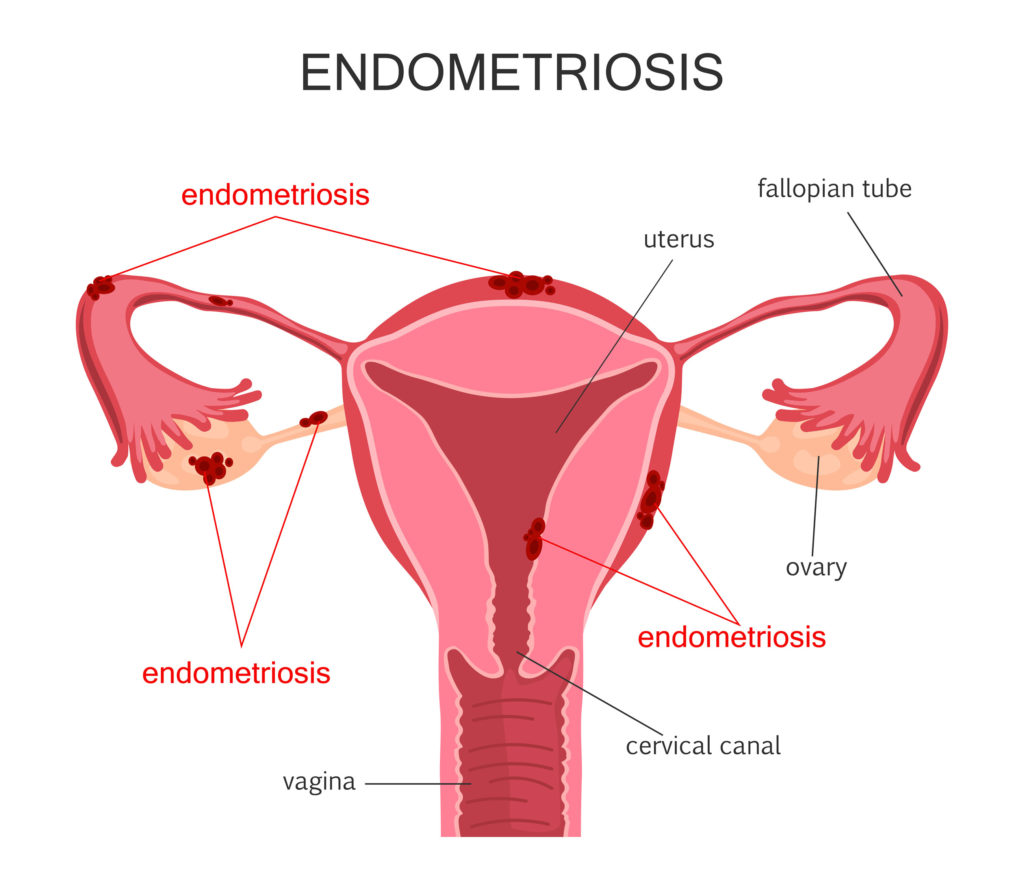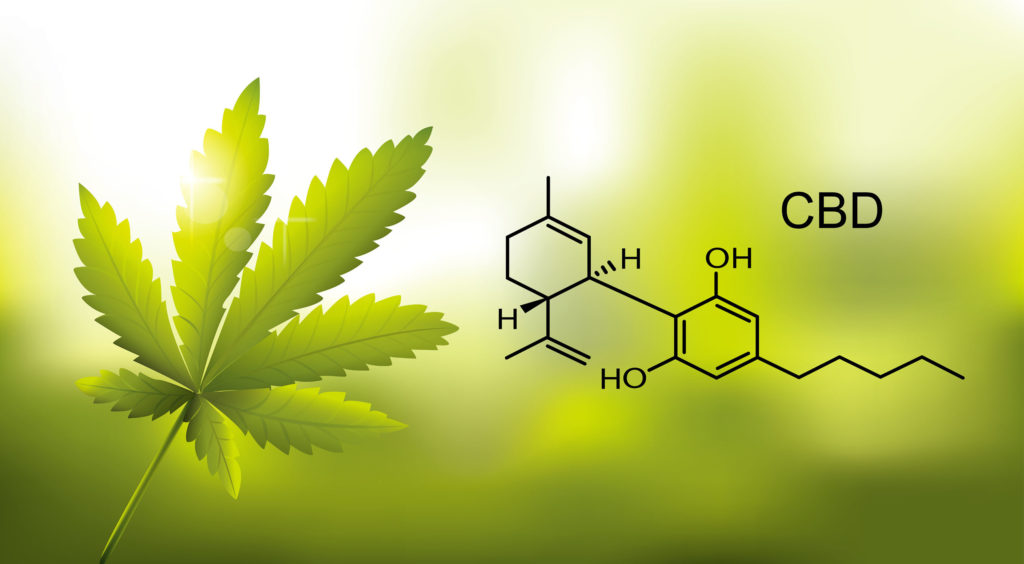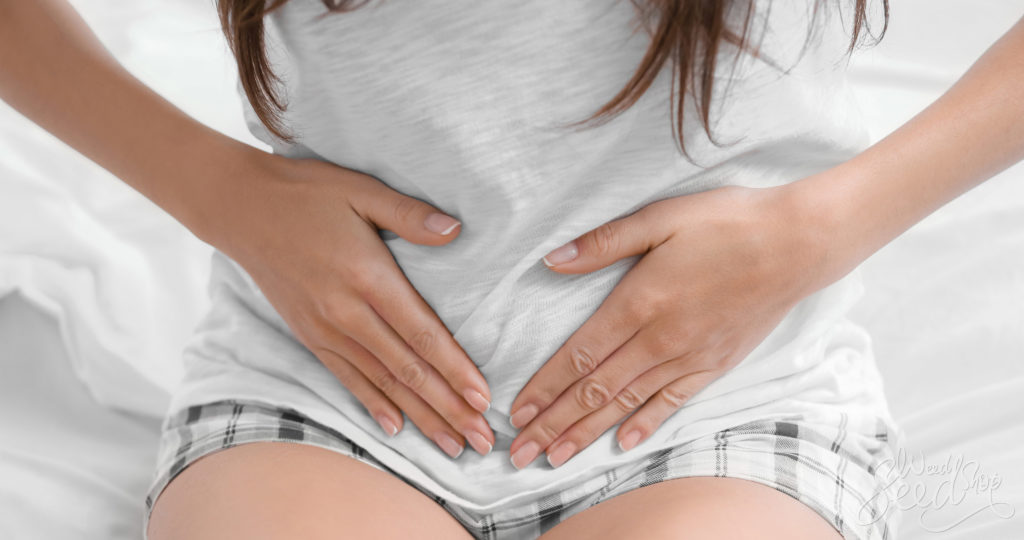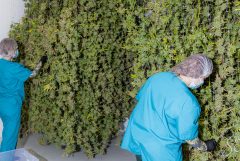For millions of women around the world, endometriosis is a battle that is hardly ever won. This debilitating condition leaves women in chronic pain, with heavy periods and even with the threat of infertility. In a world where the treatments for this condition are few, the potential of cannabis is being seriously considered. In this article, we cover the science of endometriosis and the endocannabinoid system.
The symptoms that come as a part of every woman’s monthly visitor have baffled doctors, physicians and healers for what feels like an eternity. We have perhaps arrived at many different physiological explanations for why women experience period pain. Until now, however, we have not really found an appropriate way of dealing with it.
For women with clinically diagnosed endometriosis, the pain associated with menstruation is debilitating. This pain can last the entire time that she is menstruating and if it is left untreated, it can eventually lead to infertility. It’s clear that we’re talking about something much more sinister than a tummy ache.
Diagnosing and treating endometriosis is an extremely frustrating experience for women who have found themselves in this unfortunate position. It seems that that these women must often endure the unbearable side effects of pharmaceutical drugs or resort to surgery.
What is cannabis’ role in all of this, then? Well, as we’re going to find out, endocannabinoid deficiency might play a role in endometriosis. The introduction of exogenous cannabinoids such as THC or CBD might be able to offer, for perhaps the first time, a natural remedy to the issue of endometriosis.
What is endometriosis?
According to Endofound and Endometriosis Australia, 1 in 10 women worldwide suffer from this disease. Endometriosis is characterised by abnormally severe and debilitating pains during menstruation. In extremely severe cases, this pain can also occur before and after menstruation. It is often accompanied by heavy bleeding and irregular periods at that.
Clinically, endometriosis is diagnosed when cells that line the uterus are found in other parts of the body. These tissues are usually found spread out in the lower abdomen (such as the intestine and pelvis), but can technically occur anywhere.
There is also the possibility of something called retrograde menstruation in women with endometriosis. This is when some of the blood and tissue travel upwards through the fallopian tubes and into the abdominal cavity.

In general, symptoms of endometriosis are:
- Extreme pain in abdomen and other parts of the body due to proliferation of uterine cells
- Heavy bleeding during menstruation
- Retrograde menstruation (where some of the blood and tissue travel upwards through fallopian tubes)
- Pain during intercourse
- Difficulty getting pregnant and even infertility
Why do women get endometriosis?
It’s not easy to answer this question. There are many speculations about the reasons that women get this condition. The following are potential reason why some women get endometriosis:
- Genetics. No research has really substantiated this. However, there is the observation that when endometriosis occurs, it is usually expressed in some other female member of the family.
- Exposure to certain environmental pollutants such as dioxin
- Immune system disorders. It is possible that the body’s inability to identify misplaced uterine cells cause the proliferation of these cells in wrong parts of the body
While we don’t know exactly what causes endometriosis, some correlations have been observed between certain life events and the development of the disease. Some risk factors that place women at greater risk of developing endometriosis include:
- Never giving birth
- Starting the period at an early age. For example, women who got their period before the age of 11 are possibly more prone to endometriosis.
- Short menstrual cycles: less than 27 days
- Uterine abnormalities
- Going through menopause at an older age
- Having higher levels of estrogen in the body for an extended period of time
The endocannabinoid system and endometriosis
There is a lot of academic literature that suggests that there is a connection between the endocannabinoid system and endometriosis. As the dire need for treatment continues to rise, the endocannabinoid system is emerging as a target for the treatment of this painful condition.
We have known about the presence of cannabinoid receptors in the reproductive organs of women for quite a while. As we continue to study this with respect to endometriosis, the more we seem to learn. These receptors are distributed all over the uterine tissue, and play a role in much more than simple pain management.
Simply put, women with endometriosis express less CB1 receptors throughout their uterus than women without endometriosis. This was confirmed by Sanchez et al. in this study.
This suggests an inability for these bodies to mediate pain in ways that regular woman would. Furthermore, the abnormal cells (those found outside the uterus) did express the sensory and sympathetic neurons that generate a nervous response and finally, the pain sensation.
We also know that the endocannabinoid system plays a role in cell growth and migration. In proliferative cases such as endometriosis, this is medically important. Cannabinoid receptors in the body mediate cell migration and proliferation, and a deficiency in these receptors can disrupt this entire system. The idea is that this leads to the deformity, with uterine cells growing in places they shouldn’t be.
Essentially, there might be a huge connection between endocannabinoid deficiency and the incidence of endometriosis. This is especially possible when we consider that we already know how important the ECS is when it comes to reproductive function.
How can you use cannabis to treat endometriosis?

In a world where treatment is needed badly to treat this condition, cannabis continues to be considered as an option – and so it should. The introduction of exogenous cannabinoids into the female body can encourage it to express less pain, and potentially to even help relieve the physiological condition.
The cannabinoids present in cannabis are gifted with antiproliferative properties. Just on a side note, this quality of cannabis is potentially why it can inhibit cancer growth. And this is important for endometriosis sufferers. The inhibition of the growth of uterine cells outside of the uterus can really help the condition from worsening.
On top of all of this, we know that cannabis has analgesic effects. By inhibiting the expression of the CB1 receptors present on the proliferated cells, the pain associated with endometriosis can be dramatically reduced. Unfortunately, scientists don’t have much to say about the lack of CB1 receptors in the uterus. We don’t really know if cannabis can help to replenish those.
In certain cases, endometriosis can affect libido. Sometimes this has to do with a symptom often associated with endometriosis: pain during intercourse. As a matter of fact, cannabis can help to increase libido if it is used correctly. It also doubles up as a pain killer so that there is less discomfort during sex!
To be honest, when it comes to using cannabis as a solution to endometriosis, it doesn’t make sense just to smoke it. In fact, that seems like an unproductive way to bring exogenous cannabinoids into the body.
The most logical solution seems to be treating it at the source, using either edibles or suppositories:
If pain is felt in the intestines, then perhaps ingesting cannabis through oils or edibles gives them a chance to be digested and to reach the stomach and intestines. If the pain is felt mainly in the pelvis and around the uterus, a suppository might be the fastest and most effective way to apply treatment.
When it comes to choosing a strain, it is mostly about preference. While CBD has been heavily researched for its anti-proliferative effects, THC also has exhibited this quality. If you don’t really want to get “stoned” while you medicate, then perhaps choosing CBD oil is more beneficial. Having said that, THC is the truly analgesic cannabinoid inside cannabis. So if pain relief is what you are looking for, then perhaps a high-THC strain is what you are looking for.
It is not a simple task to treat endometriosis. Sadly, it’s often left undiagnosed, and if it is diagnosed, so many sufferers end up undergoing surgery to remove the cells from their displaced location. And in the end, they can grow back after a relatively short amount of time (a few years). A treatment that at the very least can give women localized pain relief, and perhaps a smaller chance of a worsening condition is a start.











